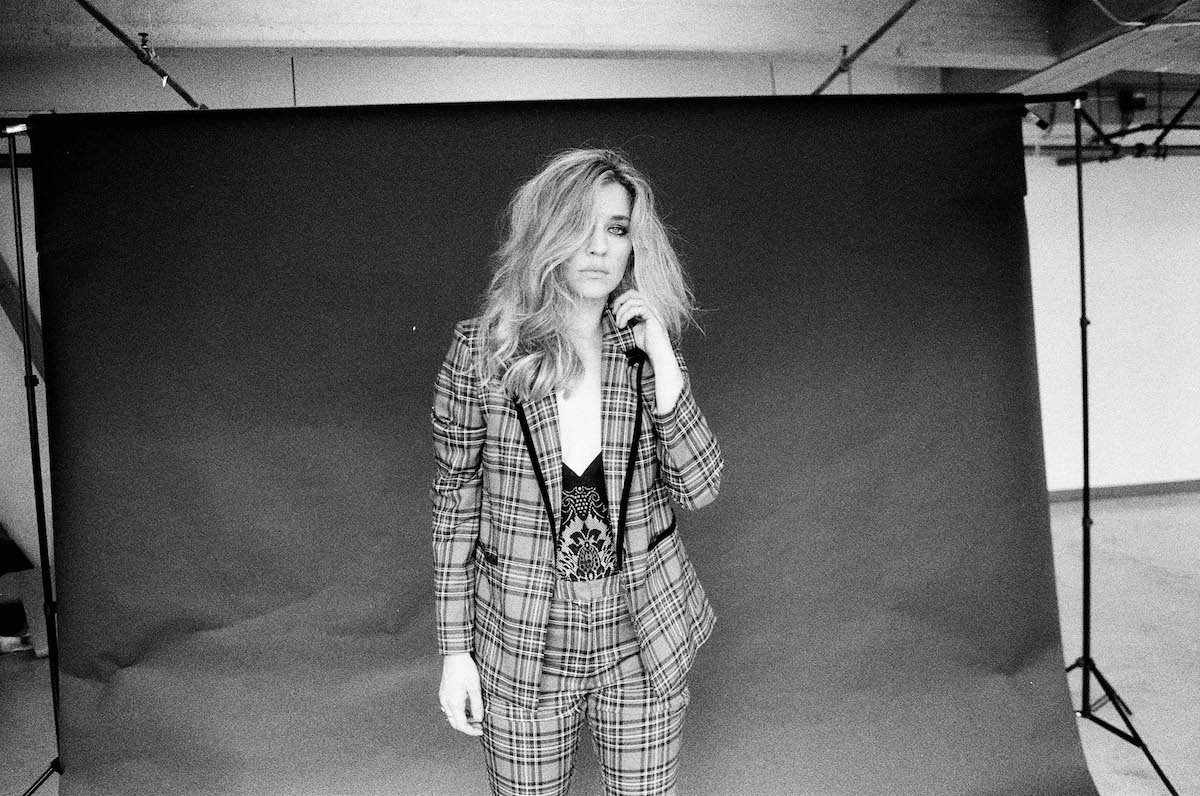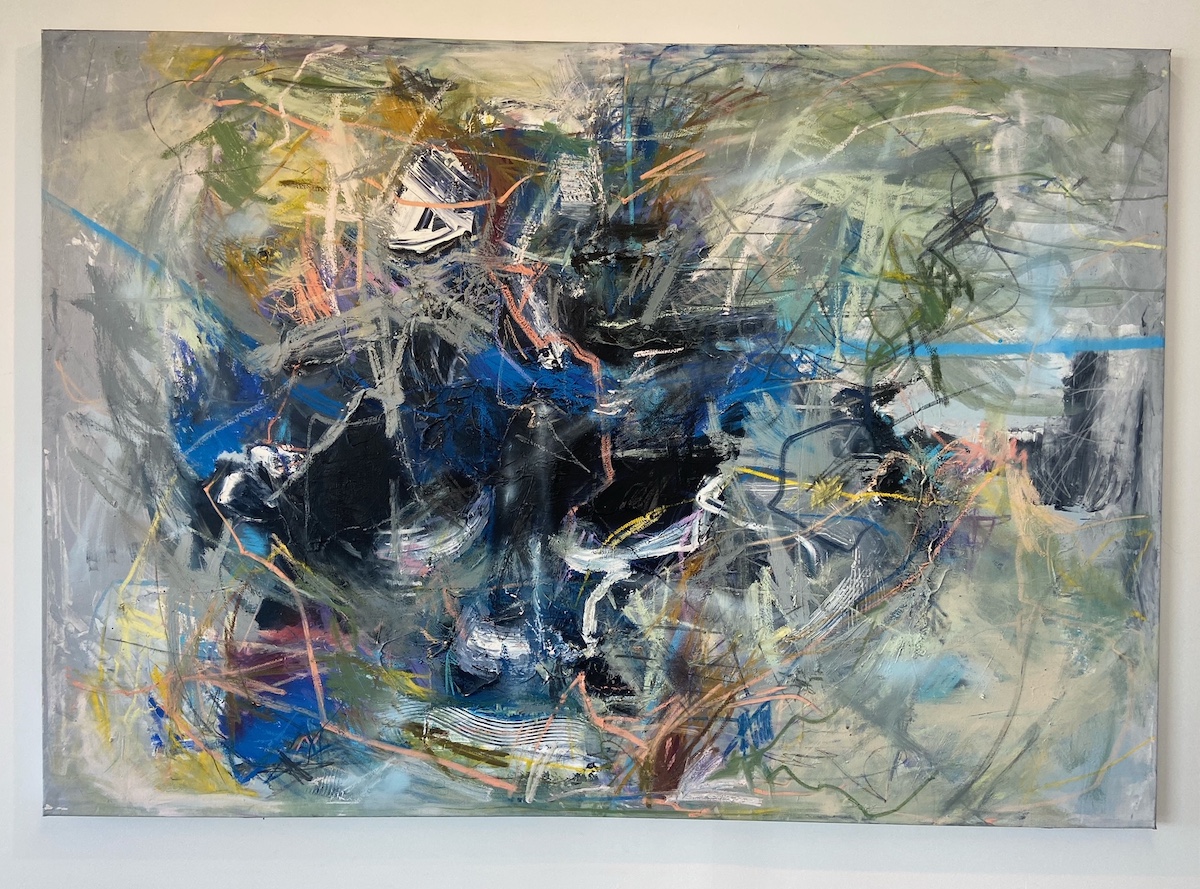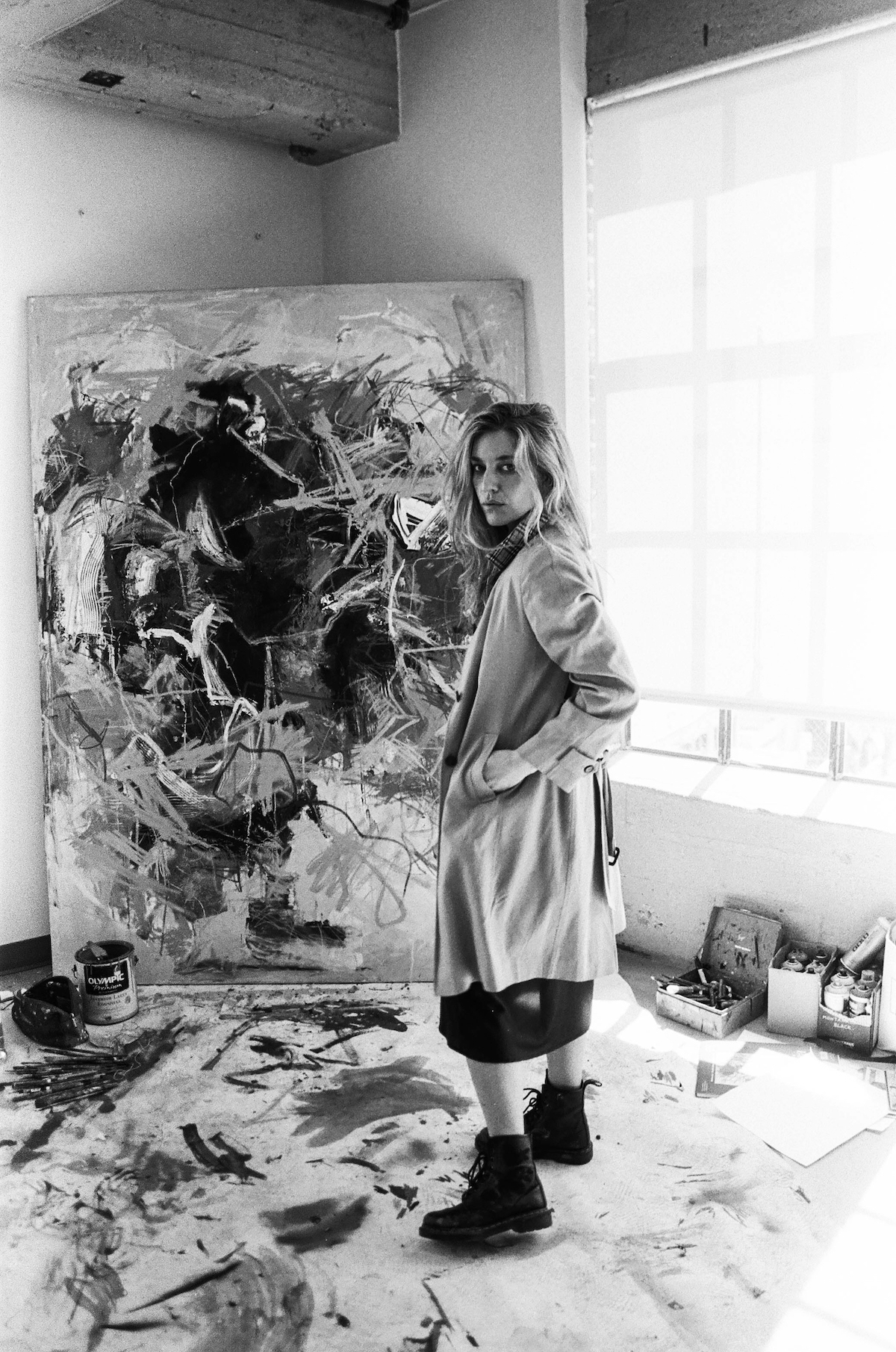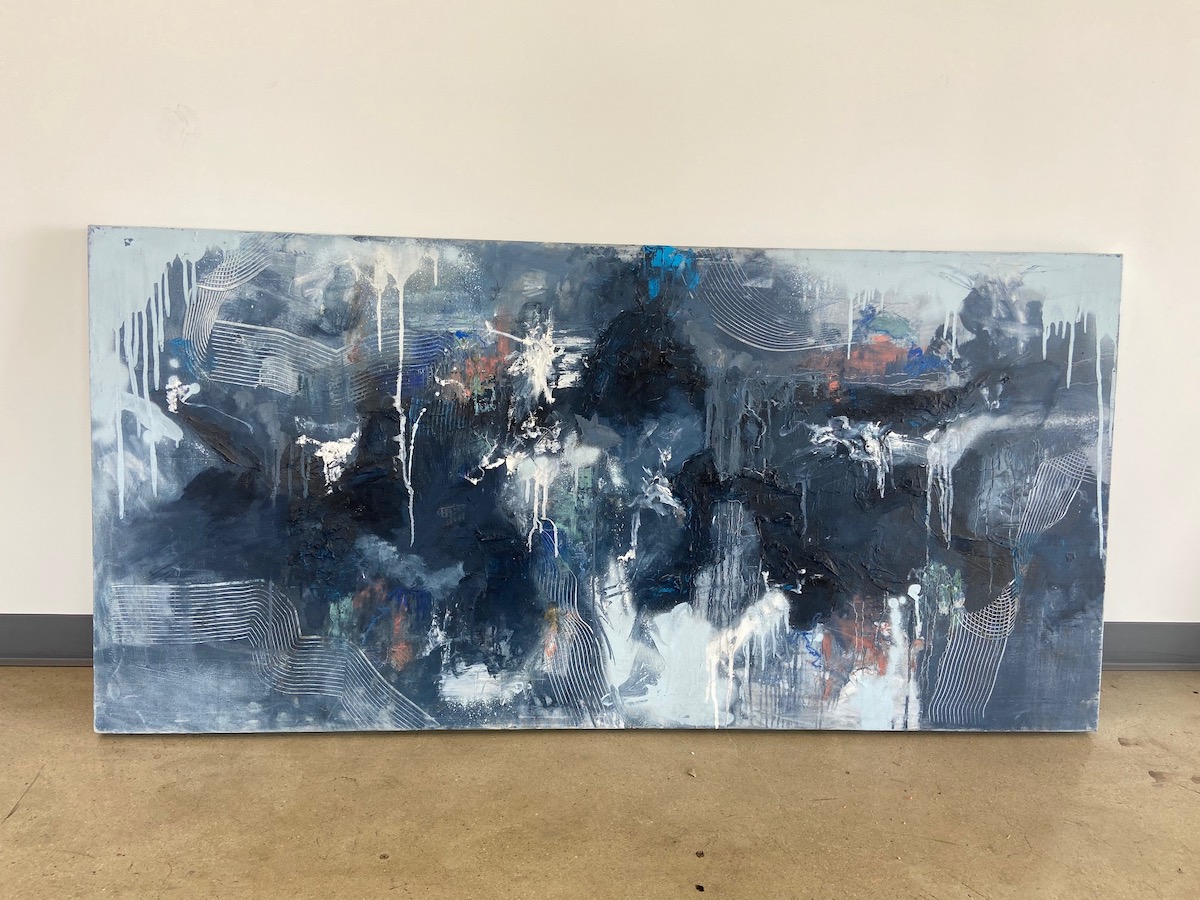The Cloudburst Vows of Gena Milanesi
Art — 28.07.21
Words: Brit Parks
Photographer: Jenna Putnam
 You may see a delicate bone as a destroyer, scratching madly at established logic. The myth of abstraction is a wet mouth drinking the ocean. It was not named on a Paris balcony salon to make visual language awash, a sky-born explanation. It was likely named at that hard part of the evening when the spirits are waning, the candles have waxed, the matches are out as you burned a thousand at the height, lips have moved to cigarettes as consumption.
You may see a delicate bone as a destroyer, scratching madly at established logic. The myth of abstraction is a wet mouth drinking the ocean. It was not named on a Paris balcony salon to make visual language awash, a sky-born explanation. It was likely named at that hard part of the evening when the spirits are waning, the candles have waxed, the matches are out as you burned a thousand at the height, lips have moved to cigarettes as consumption.
Art movements are named for a category, glass case order, a way to fit alike visual codes in an undeclared reference tome. Abstract Art, as a movement, is a monastery of methods, an isolation of self, a withdrawal from language, this language can’t stand definition, it resents the standard definition. This is a visual longing, code, myth. Gena Milanesi can be found in a self-determined storehouse, her lithe frame capable of the vast responsibility of space. When I see her large canvas, I feel certain it was a ship sail come by way of the Odyssey. How could one create those thousands of marks without their own Odyssey spilling forth?
I see Milanesi’s painting and feel the textures falling out at me. I feel how many materials have been used; the intense force, nothing random, that is the myth of abstraction. Permission for white noise, clear skies, unspoken terror turned passionate thruways. Her paintings are intensely marked, her line quality fiercely rare. This grasp of line quality finds her dripping watered down oil, gnawing at torrid yellow, engraving palette knife divisions. With an allotment of color, I am stricken by how they occur as one tone, somehow they feel like a loud rap song that translates to an ancient lull in your headphones. It’s arrestingly clear, her large staged line orchestras are stripped bare in her exaltation.
 Can you speak to your background as a self-taught artist and your inner drive at creating?
Can you speak to your background as a self-taught artist and your inner drive at creating?
Alfred Hitchcock shared his definition of happiness as, “A clear horizon ahead for renewed creation”. As a self-taught artist, you learn a great deal of self-reliance. You have to naturally challenge your craft. The losing and the finding in painting is where you fall apart and rebuild, never really starting in the right place nor finding answers right away. You must have a dance with uncertainty and start something without the answers. Art school was out of the question, I had to make this work and keep learning through uncharted waters.
Your abstract works are very large scale, can you speak to why that feels pressing to you. What can be communicated differently at that scale?
With our minds being in a constant, haphazard state last year, my process in these paintings was such a release and probably my most honest exchange with myself. Abstract is instinctive in the calculated and spontaneous gestural movements. These explorative movements make the artist the vessel to convey the unspoken. Since these pieces are reflective of portals, the large scale lends not only impact, but serves as a means of escapism, particularly with the state of the world today. For me, they act as reminders of the infinite paths life can take. The endless possibilities, and the freedom we have to make choices in our own lives. The concept that you can escape everything and step through a portal, yet choose to remain grounded is strangely comforting. Rooted in the spontaneity and instinctive nature of the pieces are all the worlds and emotions explored within the artist’s imagination during the process of their creation.

In regards to material use, you had a mixed list from traditional oils to spray paint. How do the materials you work with influence you? Such as texture, color, weight…
Texture has been a longtime fascination of mine, even outside of painting; the way a certain fabric falls on one’s skin, the aging remnants on a city wall, the density in the roots growing alongside the pavement. These details become a language that takes you out of a moment and into the next. When these mediums exchange on canvas, it becomes a conversation. I have been using monochromatic hues for some time; I’m truly enjoying exploring color again and employing aluminum into the mix as well.
Can you speak to your practice as an artist? You seem quite devout to your work.
I am regimented in my work practice. If there is one thing I have accepted, it’s that I need the freedom to navigate through mistakes and assess what to carry forward in the studio. I feel a sense of urgency to show up and try my best because I made that promise to myself from the jump. Naturally, there are days when you feel the heaviness of life and uninspired, but it shouldn’t impact your obligation to create something. I think the magic for a painter is in the little moments; the unexpected ones that lead to a specific mark or a thought written down on a scrap of paper that could evolve. The slightest gestures have become significant to my pieces and have taken me beyond where I imagined.

In terms of influence, what do you pull from? Is it more of a conceptual model or a personal emotive state?
Both. When I make a painting, evoking a reaction, good or bad, is a driving force as I want you to feel something. There is that simplistic spectrum of abstract and figurative where influences certainly vary. I certainly pull from a more conceptual model for my figurative works since there is a type of focus where the technicalities of anatomy come into play. Emotion is concealed in this process of creating a character in a story with conceptual confines – much like acting on a stage. Conversely, the abstract works have been an exploratory means stemming from pure emotion, particularly the yearning to escape while remaining stationary. In creating these works, I have noticed there is an untapped level of introspection that fundamentally relies on instinct.
How does having dual US/UK citizenship affect your sense of the world?
I am able to experience two different but familiar, and similar cultures. There is humility and acceptance because of this slightly wider lens. Yes, home is a physical place, but it is also very much a feeling. Wherever I am, this feeling is grounding, especially when lost with little sense of direction.
I was out stumbling in the rain staring at your lips so red
You said, “‘Blah, blah, blah” you got a pillow stuck in your head”
How could I argue with a mirror
She looked at me. Yes, I hear her.
When I see the glory, I ain’t gotta worry
Glory, Television
You can follow Gena Milanesi’s work through her website and Instagram @gmilanesi.